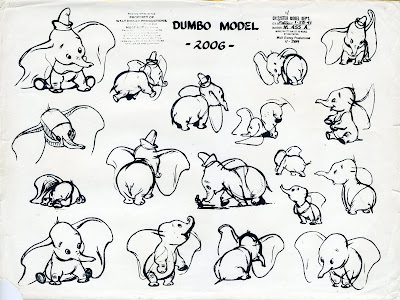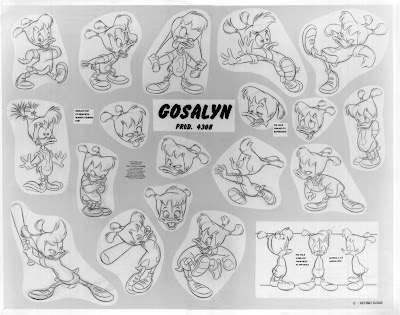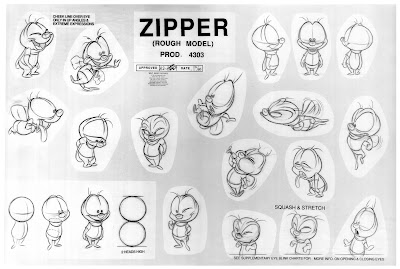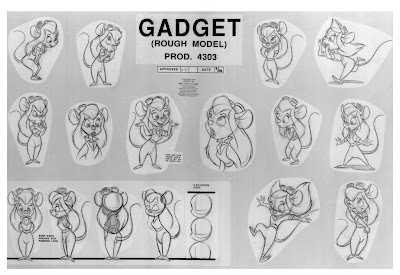You don't have to have to copy the exact page layout, what I want is the execution of the principles below on each and every drawing of your chosen model sheet. Make sure that you do these studies using traditional media and NOT digital. Here's a tip: print out your model sheet, use tracing paper to do the first assignment (w1a) on top of it as practice before you engage the actual assignment.
Do the following in this specific order:
- Main action if there is one. Good characters will have a clear read on this.
- Main forms that the character is made of (head, body).
- Secondary forms and how they are attached (limbs, ears, tail, etc).
- Squash and stretch of the forms above. Stretch is usually associated with active actions like when a character is dashing or kicking, and squash with more passive actions like sleeping or ducking. It could also means the different between a character being lazy or active.
- Double check your silhouette, positive and negative space. You can check by simply by looking at the reverse side or by rotating it. You can also check my measuring the head proportions, however be aware that some forms will be overlapping depending on the pose.
- DETAILS SHOULD ALWAYS BE LAST. Details are important, but only after you have solid forms to put them on. Details such as hair usually follow the same rule as above, there will be a main shape, followed by secondary shapes, and finally supported by minor detailing. Determine details in order of importance, it may vary depending on the character. Consider the character's costume, accessories, and props. Again, all these details will most likely follow the same ideas as above.
- Actual line drawing after you have figured everything out.





No comments:
Post a Comment